Genus LophaetusKaup, 1847 Phylum Chordata Rank Species | Scientific name Lophaetus occipitalis Higher classification Lophaetus | |
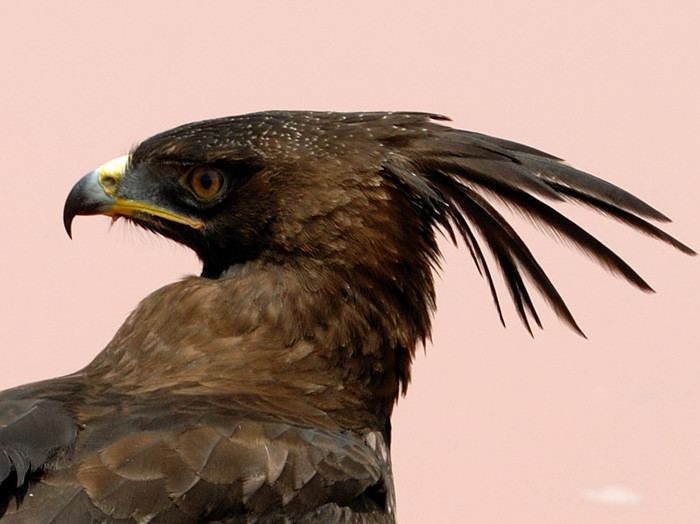 | ||
Similar Crested eagle, Wahlberg's eagle, African hawk‑eagle, Lizard buzzard, African harrier‑hawk | ||
Long crested eagle hd version
The long-crested eagle (Lophaetus occipitalis) is an African bird of prey. Like all eagles, it is in the family Accipitridae. It is currently placed in a monotypic genus Lophaetus.
Contents
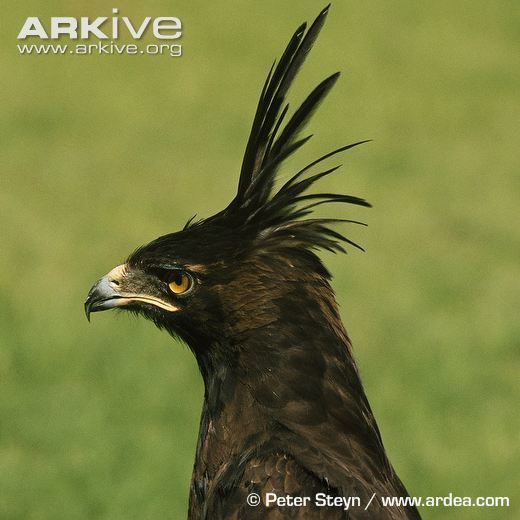
Description
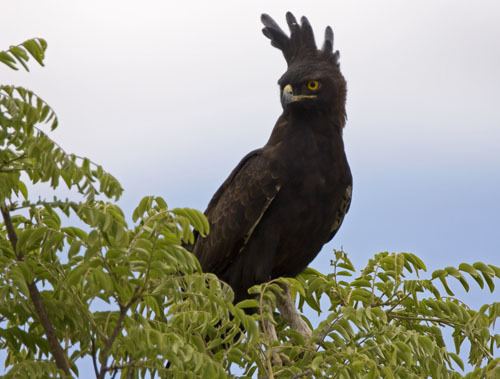
The long-crested eagle is a distinctive eagle when perched due to the long, shaggy crest and all dark plumage. The adults are blackish-brown with long, thin feathers growing from the rear of the crown which are held erect to forma crest. The secondary feathers are black barred with light grey and with broad black tips, the primary feathers and median underwing coverts are white, forming a noticeable white patch on the upper and lower surfaces of the wing which is visible in flight. The tail is black, barred with pale grey. The eyes of adults are bright yellow but can be darker in females, and the cere and feet are yellow, paling to white in males. The juveniles are similar to the adults, but the plumage is lighter in coloor and the crest is not developed and their eyes are grey. The body length is 53–58 cm (21–23 in) and the weight of the female is 1,300–1,500 g (46–53 oz), while the smaller male is 912–1,300 g (32.2–45.9 oz).
Distribution
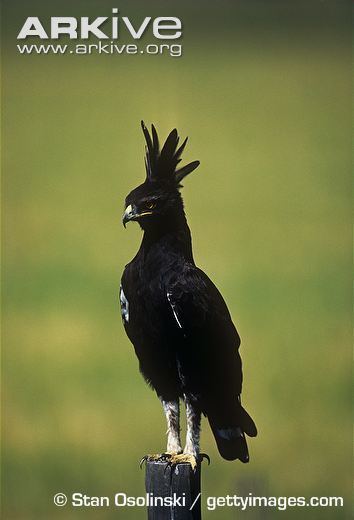
The long-crested eagle occurs in sub-Saharan Africa from Senegal and Gambia eastwards to Ethiopia and south to the Eastern Cape, in South Africa, northern Namibia and northern Botswana. It is generally regarded as sedentary. but in arid areas may be nomadic depending on the rains
Habitat
The long-crested eagle is a bird of forest edges and moist woodland, particularly if that habitat is near to grassland, marsh, a river or a stream; it can also be found in drier woodland, mixed farmland, grazing land, the edges of sugar-cane plantations and orchards. Long-crested eagles will also use exotic plantations such as those of pine or eucalyptus. They range in altitude from sea level to 3,000 m (9,800 ft), but it is unusual to find them above 2,000 m (6,600 ft).
Breeding
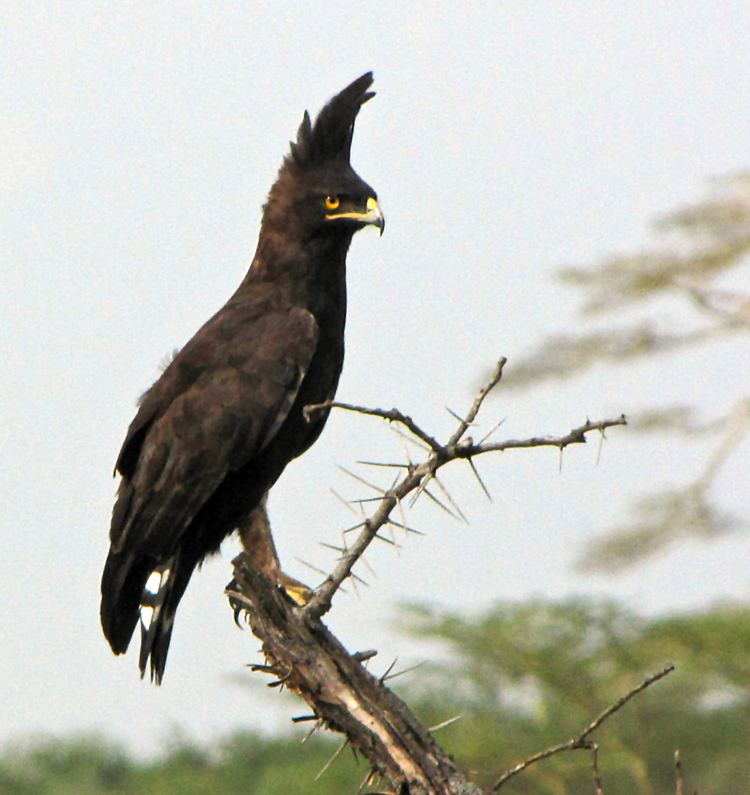
The long-crested eagle is territorial and the male displays during courtship in which he performs steep dives and also uses a rocking, level display flight, they call frequently during these displays. Both sexes build the nest, constructing a stick platform with a bowl shaped depression in the centre which is lined with green leaves. The nest is normally situated in the mid canopy and very close to the trunk of a tree near the forest edge. If available, the long-crested eagle will often reuse the nest of another bird, for example the black sparrowhawk or lizard buzzard. It breeds all year but most eggs are laid in July–November. The female lays 1-2 eggs, and she take most of the burden of incubating them, incubation lasting 42 days, as she incubates the male provides her with food. As is normal in birds of prey the eggs are laid asynchronously, as much as two weeks apart,and the female begins incubation as soon as the first egg is laid which mans that hatching is also asynchronous. When the young hatch they are initially mainly fed by the male. The period from hatching to fledging is about 53 days, and the juveniles remain dependent on the adults for about a further 2–3 months. The nests have been recorded as being preyed upon by monkeys Cercopithecus spp and genets.
Food

Up to 98% of the diet of the long-crested eagle consists of rodents. In southern Africa the rodents taken included greater cane rat (Thryonomys swinderianus), vlei rats Otomys spp, African marsh rat (Dasmys incomtus) and four-striped grass mouse (Rhabdomys pumilio). Birds, including owls and the young of other raptors, frogs and lizards, invertrebrates and even fish and fruit were alo recorded as forming part of the diet of this species.
The long-crested eagle is a "sit and wait" hunter which waits on a perch, scanning the ground and swoops on prey with a gliding flight when it come to the bird's notice.
